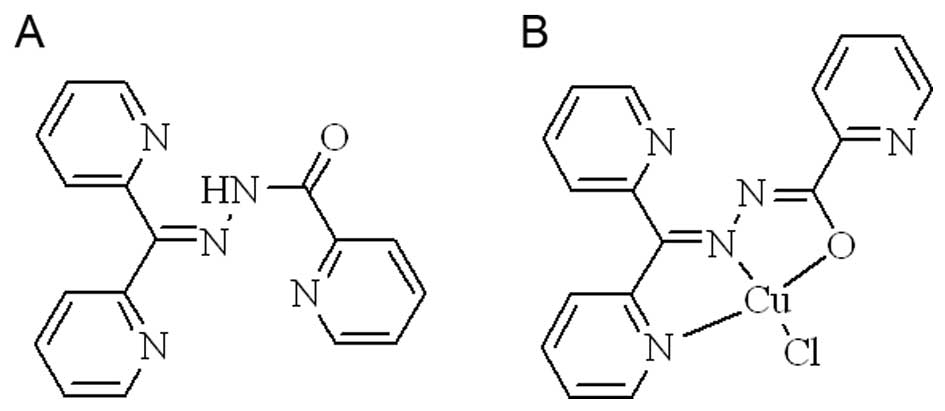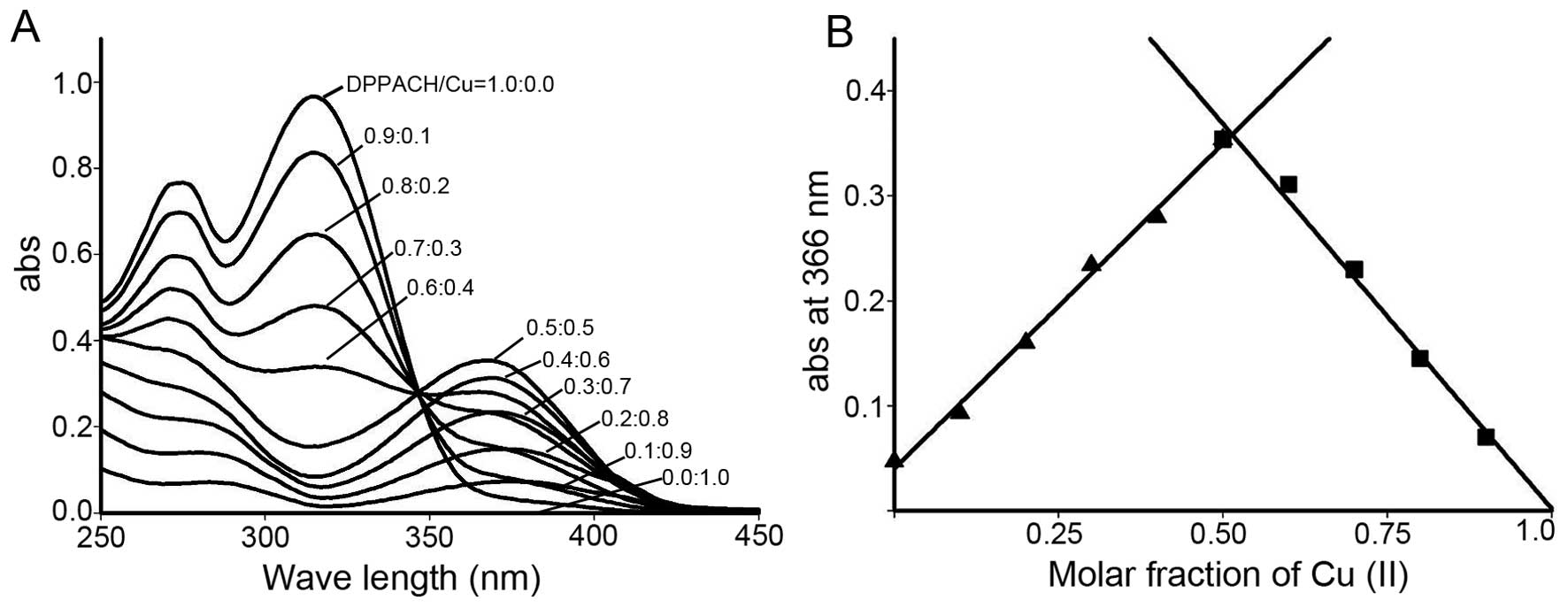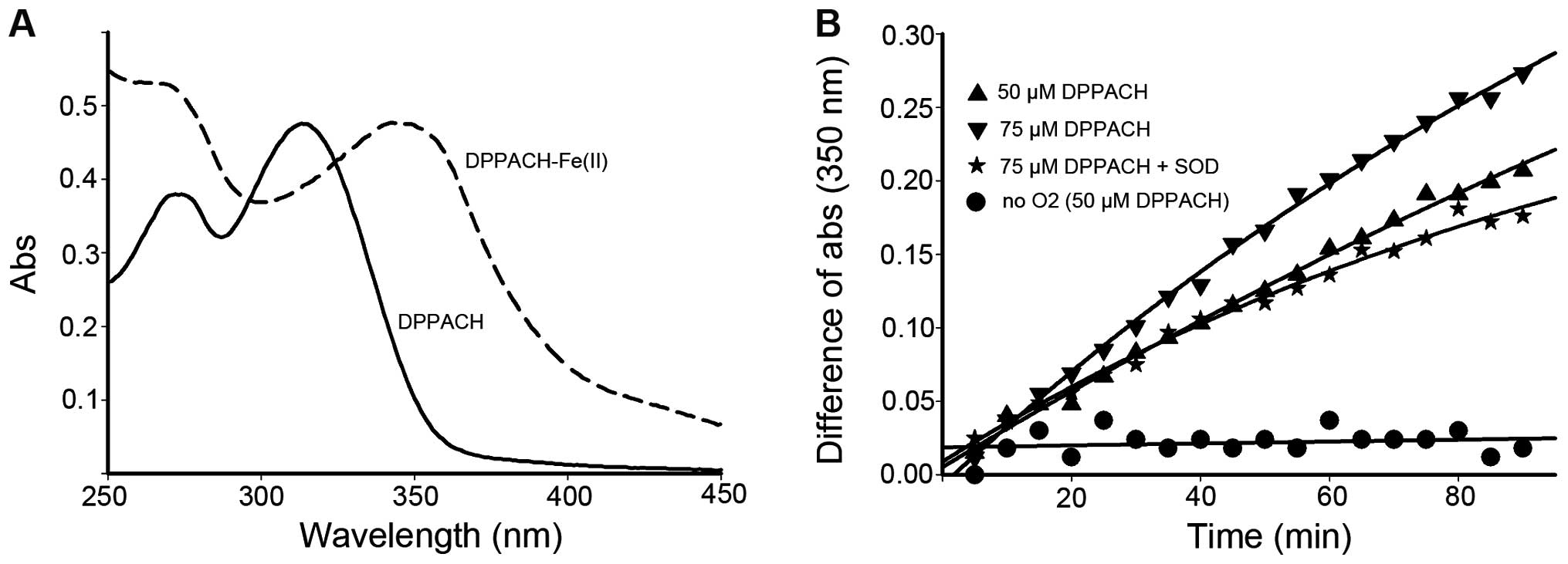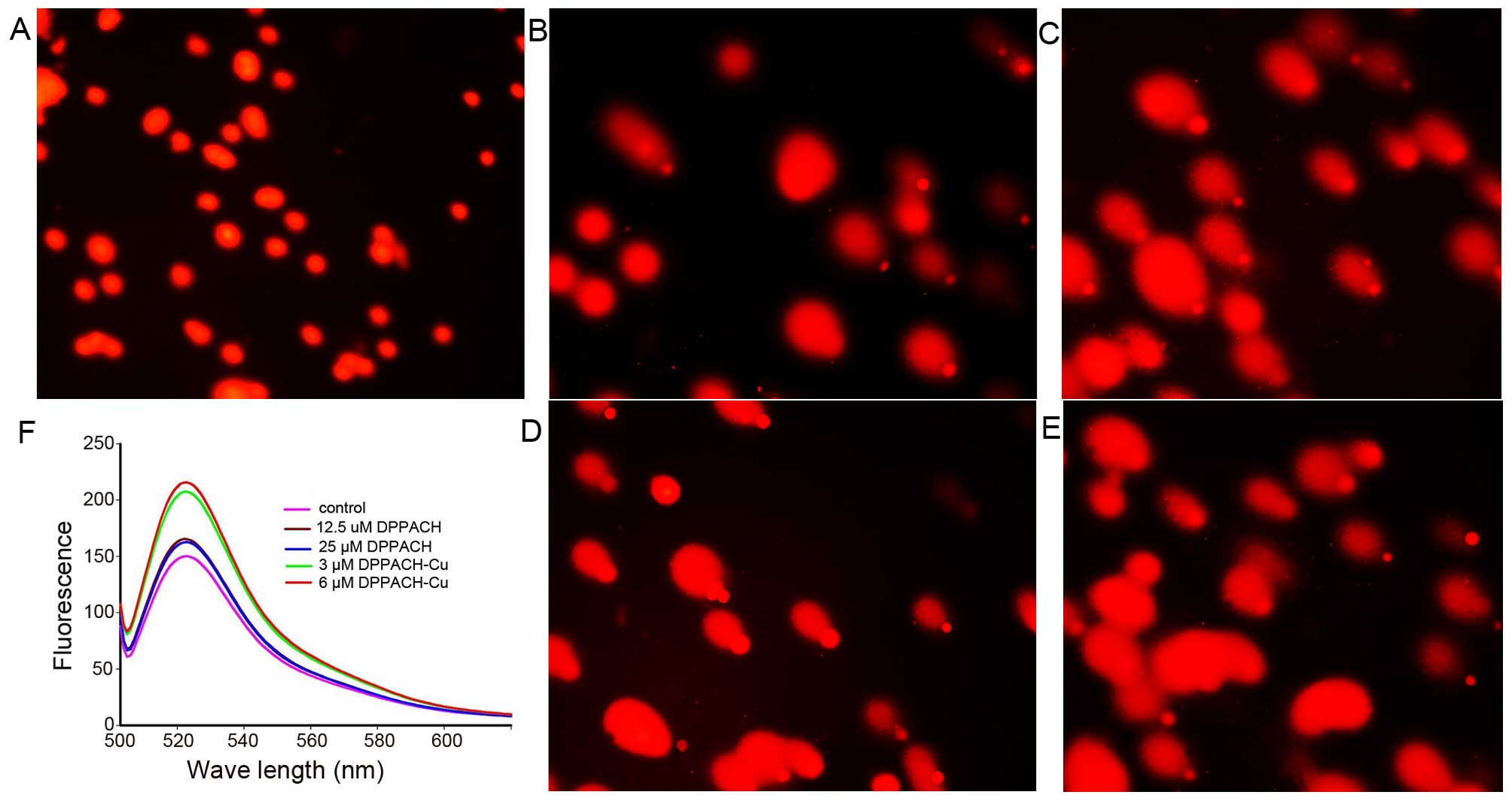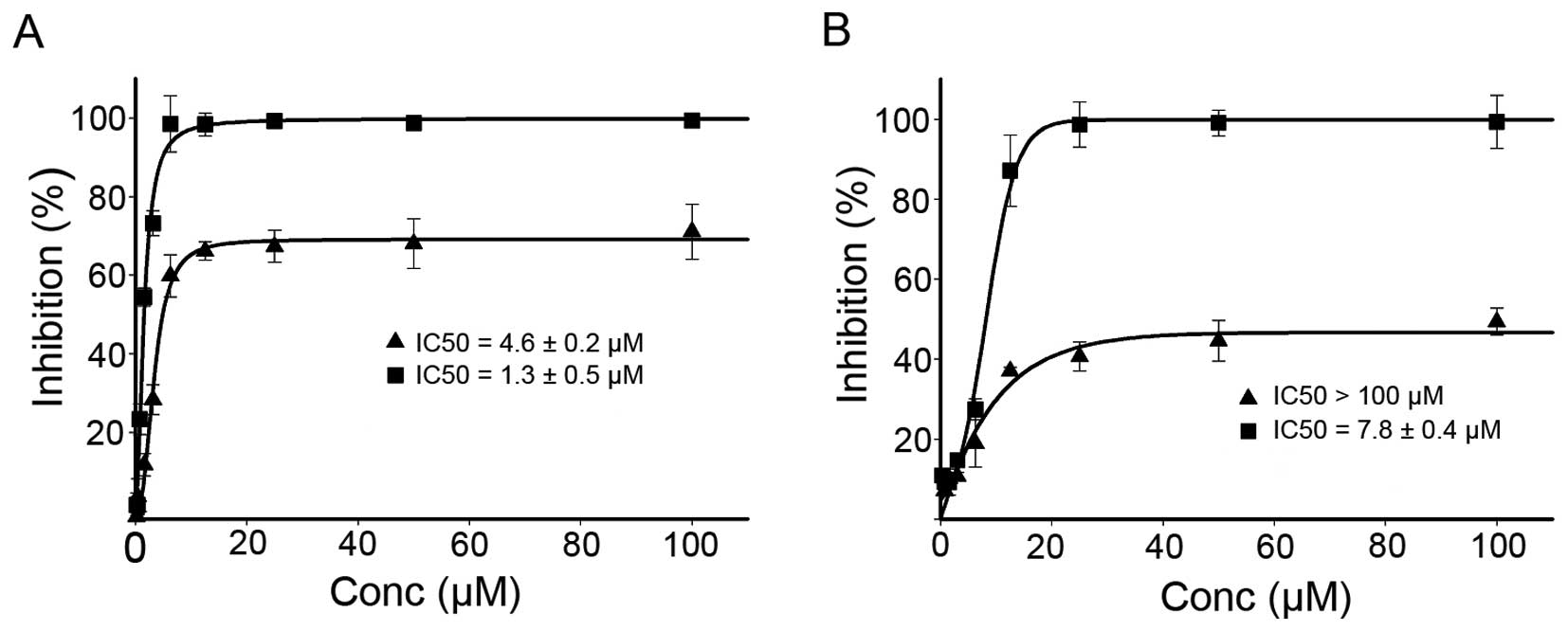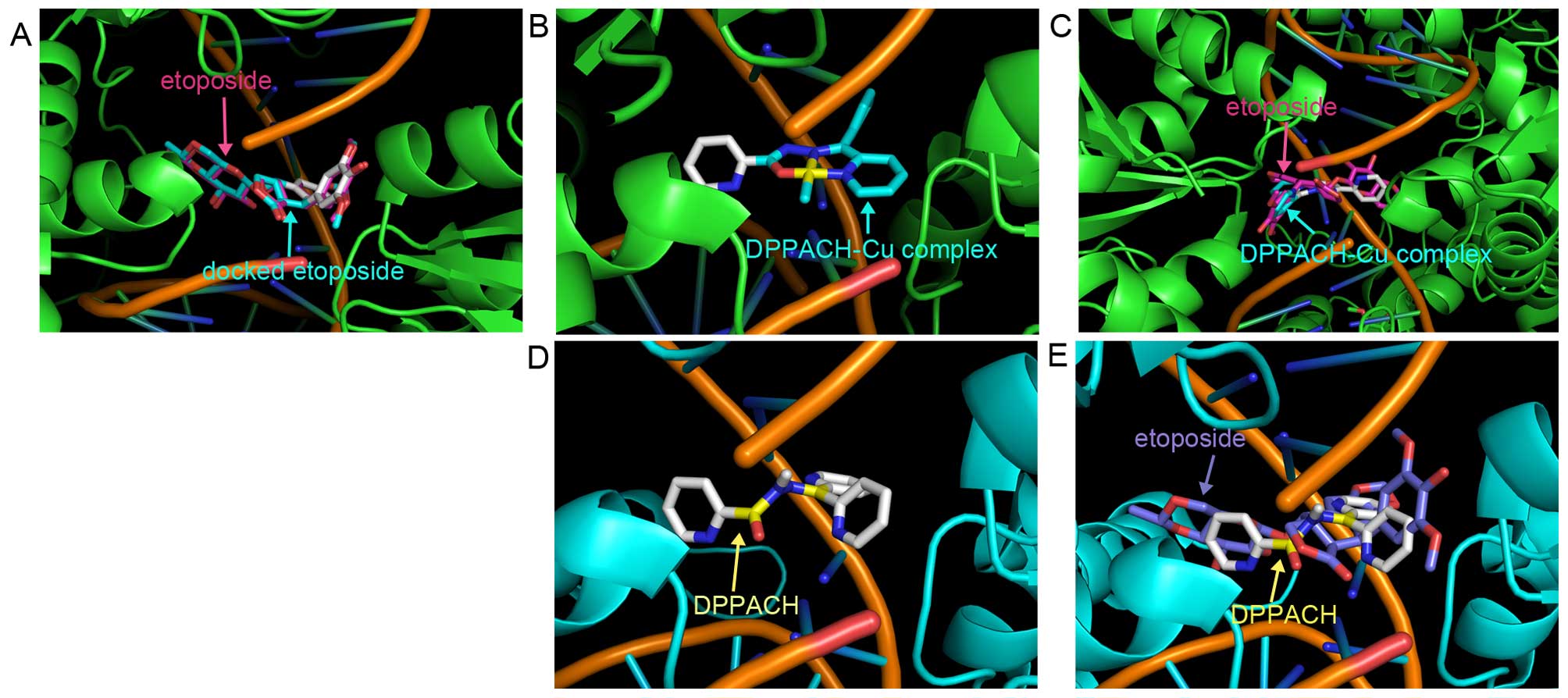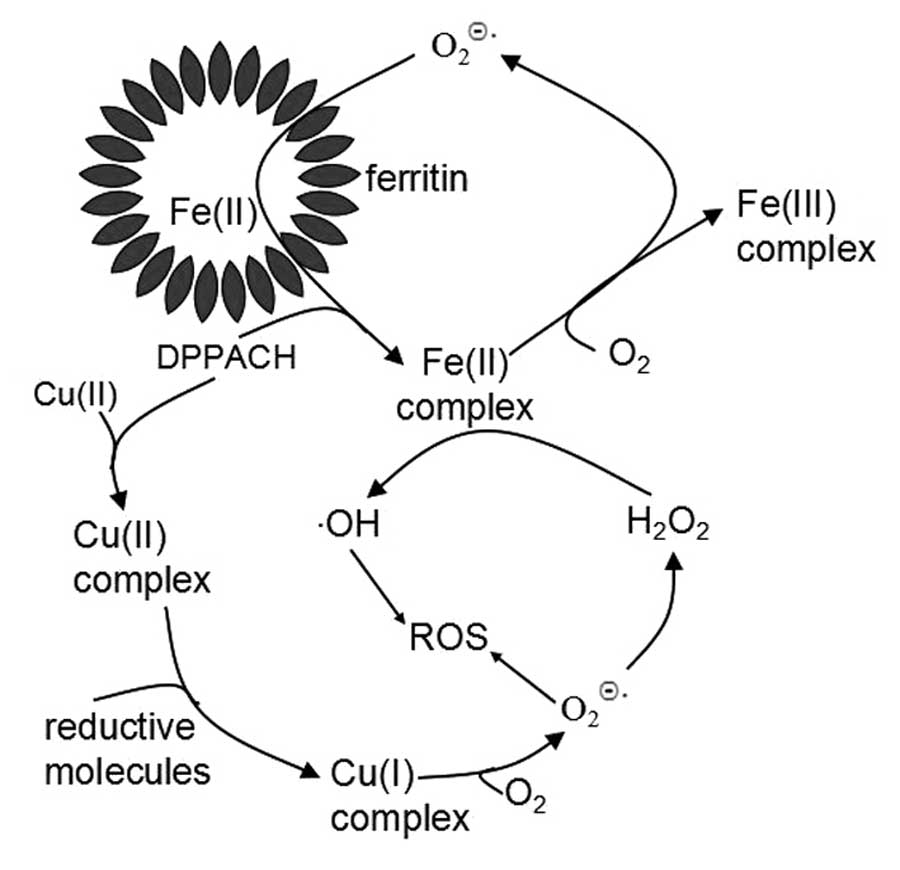|
1
|
Chen Z, Zhang D, Yue F, Zheng M, Kovacevic
Z and Richardson DR: The iron chelators Dp44mT and DFO inhibit
TGF-β-induced epithelial-mesenchymal transition via up-regulation
of N-Myc downstream-regulated gene 1 (NDRG1). J Biol Chem.
287:17016–17028. 2012. View Article : Google Scholar : PubMed/NCBI
|
|
2
|
Valko M, Rhodes CJ, Moncol J, Izakovic M
and Mazur M: Free radicals, metals and antioxidants in oxidative
stress-induced cancer. Chem Biol Interact. 160:1–40. 2006.
View Article : Google Scholar : PubMed/NCBI
|
|
3
|
Wondrak GT: Redox-directed cancer
therapeutics: Molecular mechanisms and opportunities. Antioxid
Redox Signal. 11:3013–3069. 2009. View Article : Google Scholar : PubMed/NCBI
|
|
4
|
Crespo-Ortiz MP and Wei MQ: Antitumor
activity of artemisinin and its derivatives: from a well-known
antimalarial agent to a potential anticancer drug. J Biomed
Biotechnol. 2012:2475972012. View Article : Google Scholar
|
|
5
|
Wolszczak M and Gajda J: Iron release from
ferritin induced by light and ionizing radiation. Res Chem
Intermed. 36:549–563. 2010. View Article : Google Scholar
|
|
6
|
Sánchez P, Gálvez N, Colacio E, Miñones E
and Domínguez-Vera JM: Catechol releases iron(III) from ferritin by
direct chelation without iron(II) production. Dalton Trans.
2005:811–813. 2005. View
Article : Google Scholar
|
|
7
|
Bou-Abdallah F, McNally J, Liu XX and
Melman A: Oxygen catalyzed mobilization of iron from ferritin by
iron(III) chelate ligands. Chem Commun (Camb). 47:731–733. 2011.
View Article : Google Scholar
|
|
8
|
Saad SY, Najjar TA and Al-Rikabi AC: The
preventive role of deferoxamine against acute doxorubicin-induced
cardiac, renal and hepatic toxicity in rats. Pharmacol Res.
43:211–218. 2001. View Article : Google Scholar : PubMed/NCBI
|
|
9
|
Jansson PJ, Hawkins CL, Lovejoy DB and
Richardson DR: The iron complex of Dp44mT is redox-active and
induces hydroxyl radical formation: An EPR study. J Inorg Biochem.
104:1224–1228. 2010. View Article : Google Scholar : PubMed/NCBI
|
|
10
|
Rao VA, Klein SR, Agama KK, Toyoda E,
Adachi N, Pommier Y and Shacter EB: The iron chelator Dp44mT causes
DNA damage and selective inhibition of topoisomerase IIalpha in
breast cancer cells. Cancer Res. 69:948–957. 2009. View Article : Google Scholar : PubMed/NCBI
|
|
11
|
Lovejoy DB, Jansson PJ, Brunk UT, Wong J,
Ponka P and Richardson DR: Antitumor activity of metal-chelating
compound Dp44mT is mediated by formation of a redox-active copper
complex that accumulates in lysosomes. Cancer Res. 71:5871–5880.
2011. View Article : Google Scholar : PubMed/NCBI
|
|
12
|
Fu Y, Zhou SF, Liu YX, Yang Y, Sun X and
Li C: The cytotoxicity of benzaldehyde nitrogen mustard-2-pyridine
carboxylic acid hydrazone being involved in topoisomerase IIa
inhibition. Biomed Res Int. 2014:5270422014. View Article : Google Scholar
|
|
13
|
Likussar W and Boltz DF: Theory of
continuous variations plots and a new method for spectrophotometric
determination of extraction and formation constants. Anal Chem.
43:1265–1272. 1971. View Article : Google Scholar
|
|
14
|
Jakubowski W and Bartosz G:
2,7-dichlorofluorescin oxidation and reactive oxygen species: What
does it measure? Cell Biol Int. 24:757–760. 2000. View Article : Google Scholar : PubMed/NCBI
|
|
15
|
Singh NP, McCoy MT, Tice RR and Schneider
EL: A simple technique for quantitation of low levels of DNA damage
in individual cells. Exp Cell Res. 175:184–191. 1988. View Article : Google Scholar : PubMed/NCBI
|
|
16
|
Osheroff N, Shelton ER and Brutlag DL: DNA
topoisomerase II from Drosophila melanogaster. Relaxation of
supercoiled DNA. J Biol Chem. 258:9536–9543. 1983.PubMed/NCBI
|
|
17
|
Banerjee S, Sen S, Basak S, Mitra S,
Hughes DL and Desplanches C: Two new pseudohalide-bridged Cu(II)
complexes with a hydrazone ligand: Syntheses, crystal structures
and magnetic studies. Inorg Chim Acta. 361:2707–2714. 2008.
View Article : Google Scholar
|
|
18
|
Ok K, Jung YW, Jee JG and Byun Y: Facile
docking and scoring studies of carborane ligands with estrogen
receptor. Bull Korean Chem Soc. 34:1051–1054. 2013. View Article : Google Scholar
|
|
19
|
Trott O and Olson AJ: AutoDock Vina:
Improving the speed and accuracy of docking with a new scoring
function, efficient optimization, and multithreading. J Comput
Chem. 31:455–461. 2010.
|
|
20
|
Boukhalfa H and Crumbliss AL: Chemical
aspects of siderophore mediated iron transport. Biometals.
15:325–339. 2002. View Article : Google Scholar : PubMed/NCBI
|
|
21
|
Kakhlon O and Cabantchik ZI: The labile
iron pool: Characterization, measurement, and participation in
cellular processes(1). Free Radic Biol Med. 33:1037–1046. 2002.
View Article : Google Scholar : PubMed/NCBI
|
|
22
|
Stäubli A and Boelsterli UA: The labile
iron pool in hepatocytes: Prooxidant-induced increase in free iron
precedes oxidative cell injury. Am J Physiol. 274:G1031–G1037.
1998.PubMed/NCBI
|
|
23
|
Becker EM, Lovejoy DB, Greer JM, Watts R
and Richardson DR: Identification of the di-pyridyl ketone
isonicotinoyl hydrazone (PKIH) analogues as potent iron chelators
and anti-tumour agents. Br J Pharmacol. 138:819–830. 2003.
View Article : Google Scholar : PubMed/NCBI
|
|
24
|
Mylonas S and Mamalis A: Synthesis and
antitumor activity of new thiosemicarbazones of
2-acetylimidazo[4,5-b]pyridine. J Heterocycl Chem. 42:1273–1281.
2005. View Article : Google Scholar
|
|
25
|
Chaston TB, Watts RN, Yuan J and
Richardson DR: Potent antitumor activity of novel iron chelators
derived from di-2-pyridylketone isonicotinoyl hydrazone involves
fenton-derived free radical generation. Clin Cancer Res.
10:7365–7374. 2004. View Article : Google Scholar : PubMed/NCBI
|
|
26
|
Korystov YN, Shaposhnikova VV, Korystova
AF and Emel'yanov MO: Detection of reactive oxygen species induced
by radiation in cells using the dichlorofluorescein assay. Radiat
Res. 168:226–232. 2007. View Article : Google Scholar : PubMed/NCBI
|
|
27
|
Fatfat M, Merhi RA, Rahal O, Stoyanovsky
DA, Zaki A, Haidar H, Kagan VE, Gali-Muhtasib H and Machaca K:
Copper chelation selectively kills colon cancer cells through redox
cycling and generation of reactive oxygen species. BMC Cancer.
14:5272014. View Article : Google Scholar : PubMed/NCBI
|
|
28
|
Gaetke LM and Chow CK: Copper toxicity,
oxidative stress, and antioxidant nutrients. Toxicology.
189:147–163. 2003. View Article : Google Scholar : PubMed/NCBI
|
|
29
|
Jacquemin G, Margiotta D, Kasahara A,
Bassoy EY, Walch M, Thiery J, Lieberman J and Martinvalet D:
Granzyme B-induced mitochondrial ROS are required for apoptosis.
Cell Death Differ. 22:862–874. 2015. View Article : Google Scholar
|
|
30
|
Xiao D, Vogel V and Singh SV: Benzyl
isothiocyanate-induced apoptosis in human breast cancer cells is
initiated by reactive oxygen species and regulated by Bax and Bak.
Mol Cancer Ther. 5:2931–2945. 2006. View Article : Google Scholar : PubMed/NCBI
|
|
31
|
Pinar A, Yurdakul P, Yildiz I,
Temiz-Arpaci O, Acan NL, Aki-Sener E and Yalcin I: Some fused
heterocyclic compounds as eukaryotic topoisomerase II inhibitors.
Biochem Biophys Res Commun. 317:670–674. 2004. View Article : Google Scholar : PubMed/NCBI
|
|
32
|
Fu Y, Yang Y, Zhou S, Liu Y, Yuan Y, Li S
and Li C: Ciprofloxacin containing Mannich base and its copper
complex induce antitumor activity via different mechanism of
action. Int J Oncol. 45:2092–2100. 2014.PubMed/NCBI
|
|
33
|
Yalowich JC, Wu X, Zhang R, Kanagasabai R,
Hornbaker M and Hasinoff BB: The anticancer thiosemicarbazones
Dp44mT and triapine lack inhibitory effects as catalytic inhibitors
or poisons of DNA topoisomerase IIα. Biochem Pharmacol. 84:52–58.
2012. View Article : Google Scholar : PubMed/NCBI
|
|
34
|
Yang Y, Huang T, Zhou S, Fu Y, Liu Y, Yuan
Y, Zhang Q, Li S and Li C: Antitumor activity of a
2-pyridinecarboxaldehyde 2-pyridinecarboxylic acid hydrazone copper
complex and the related mechanism. Oncol Rep. 34:1311–1318.
2015.PubMed/NCBI
|
|
35
|
Huang B: MetaPocket: A meta approach to
improve protein ligand binding site prediction. OMICS. 13:325–330.
2009. View Article : Google Scholar : PubMed/NCBI
|















